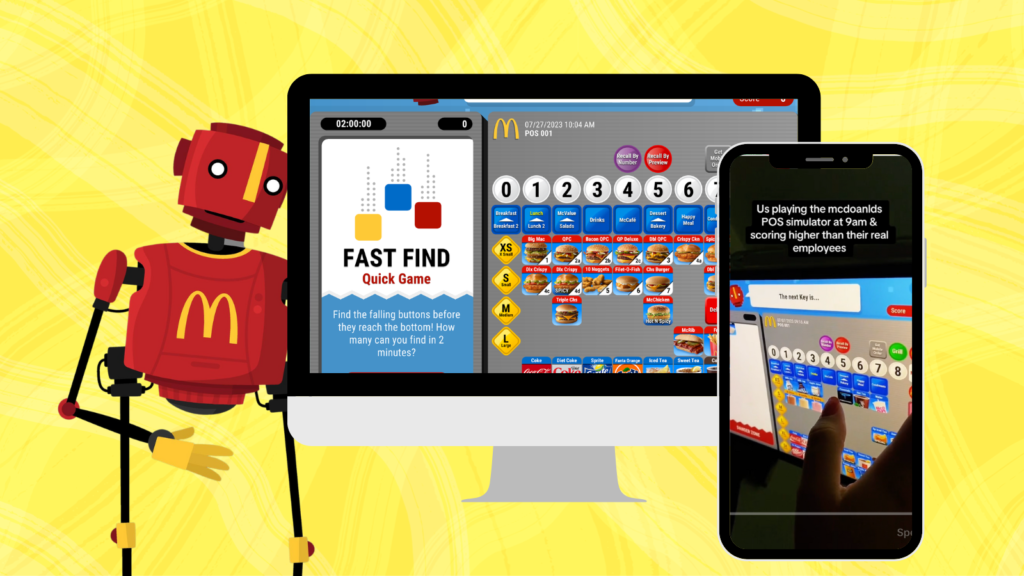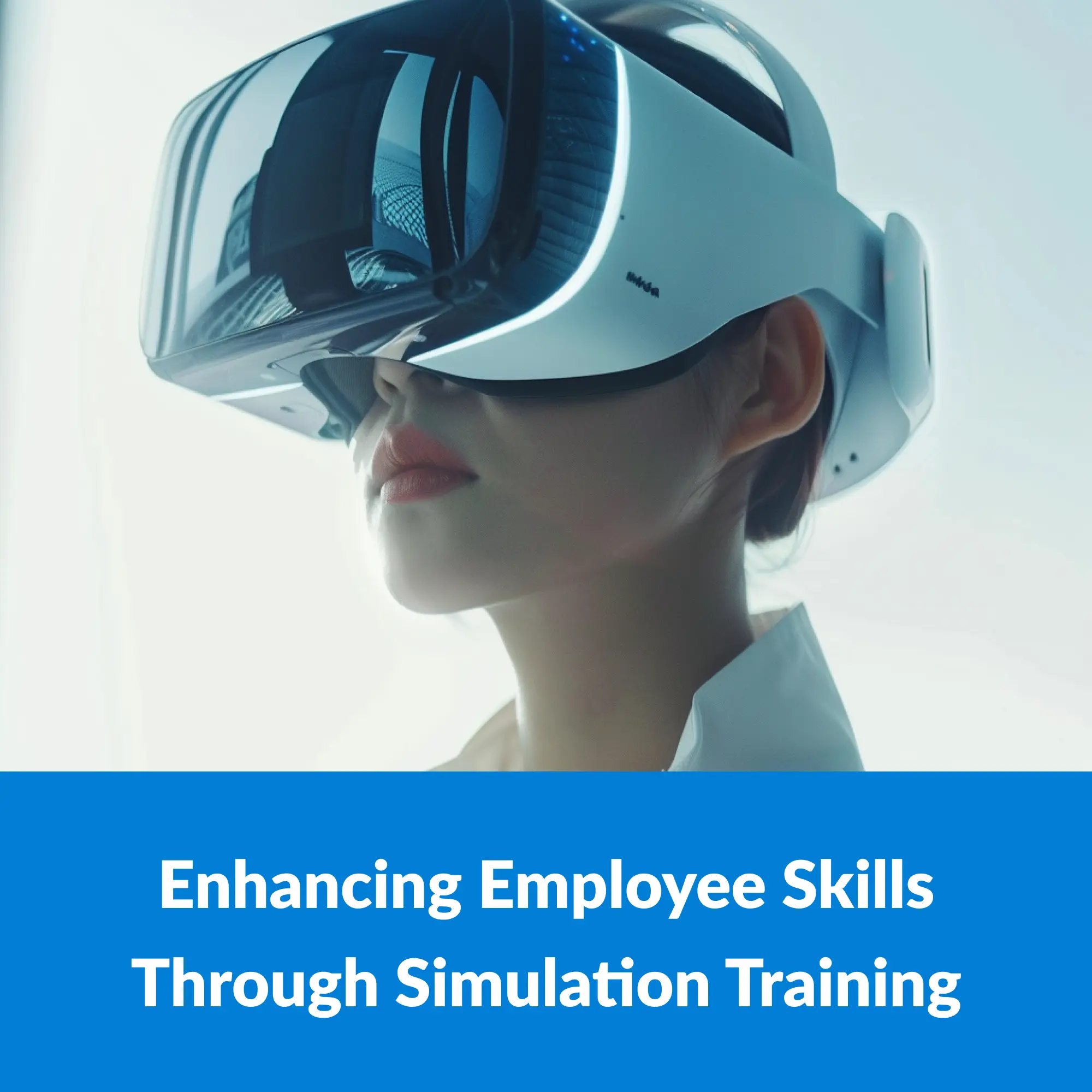Forget the dry manuals and rote memorization – McDonald’s is flipping the script on employee training with a viral TikTok game that’s as addictive as it is informative. Introducing the McDonald’s POS Training Simulator, a gamified learning experience that’s not just teaching new hires how to work the register, it’s capturing the hearts (and thumbs) of the internet. This article delves into the concept of training simulators, focusing on McDonald’s unique approach.

What is a Training Simulator?
A training simulator is a digital tool designed to mimic real-life scenarios for training purposes. These simulators offer a risk-free environment for learners to practice and hone their skills. By simulating real-world situations, training simulators enable learners to gain hands-on experience without the consequences of real-world mistakes.
Inside the McDonald’s POS Training Simulator

McDonald’s POS training simulator has taken the internet by storm, particularly on TikTok, where it gained viral fame. Originally intended for employees to learn the nuances of operating cash registers, this simulator is now accessible to the public. Gone are the days of monotonous lectures and shadowing seasoned cashiers.
This interactive training tool throws players right into the thick of things, complete with a friendly bionic instructor (think red, arch-emblazoned R2-D2) guiding them through timed mini-games and order challenges. Whether you’re mastering the intricacies of the menu or learning to juggle customization requests like a pro, the simulator offers a realistic and engaging way to hone your cashier skills.
But its impact goes beyond just button-mashing. This viral McDonald’s training game is earning praise for its ability to:
- Boost real-world skills: From order accuracy to customer interaction, the simulator is a crash course in fast-food etiquette.
- Memory Boost: The game challenges players to remember complex orders, serving as an effective brain exercise.
- Master time management: With its fast-paced nature, the simulator teaches players the importance of efficiency and time management in a high-pressure environment. Indeed, McDonald’s has been lauded for its creative approach to employee training. By replacing monotonous training sessions with an engaging game, the company has set a new standard in corporate training. This approach not only makes learning more enjoyable but also improves information retention and skill acquisition.

11 steps for incorporating training simulation into your learning & development (L&D) Strategy:
Remember, McDonald’s success didn’t happen overnight. It took careful planning, development, and a willingness to break the mold. So, take a page out of their playbook, ditch the dry textbooks and fire up the training simulator. Inspired by Mcdonalds POS training simulator of success, here are 11 steps for incorporating training simulation into your learning & development (L&D) Strategy:

1. Define Training Objectives:
Begin by identifying specific learning objectives that align with your organization’s values and industry trends. Setting clear goals based on these objectives enables L&D teams to design more effective training strategies.
2. Identify Target Audience:
After setting broader objectives, determine which employees or groups will participate in the simulation training. This step is crucial for tailoring the format and design of the training programs, especially for business units like customer support, client relationship management, business development, and sales teams.
3. Needs Assessment:
Conduct a formal assessment of training needs, considering industry trends, organizational goals, employee strengths, skill gaps, and the need for remote training accommodations.
4. Choose the Right Simulation Type:
The format of simulation training varies by industry, role, and skill area. For technical skills, simulations might involve equipment or lab environments, while role-playing and conversational simulations are suitable for interpersonal skills. The level of immersion can range from simple role-playing activities to immersive virtual reality experiences.
5. Invest in L&D Software for Simulated Training:
Invest in next-gen learning management systems (LMS) and interactive tools like digital adoption platforms (DAP). Emerging technologies such as generative AI, conversational chatbots, and AR/VR can make simulations more realistic. Dialogue simulation software, for example, can be particularly beneficial for customer service reps and sales teams.
6. Develop Realistic Scenarios:
Create training scenarios that reflect the information gathered in previous steps. Use narratives that replicate real-life working environments to improve retention and applicability in the real world.
7. Design Interactive Learning Experiences:
With the scenarios set, focus on detailing the experiences. Use storyboards to organize scenarios and ensure they are engaging yet straightforward for effective learning outcomes.
8. Incorporate Learner Feedback and Assessment:
Build regular checkpoints for progress and feedback into the training program. Immediate feedback upon completion helps employees understand their performance and areas for improvement.
9. Real-time Monitoring:
Utilize the data analytics tools in simulation training software for detailed, real-time monitoring of employee progress and the program’s impact.
10. Offer Support and Resources:
Managers, mentors, and training facilitators should be available to provide assistance and clarification. Leaders should commit to allocating the necessary budget and personnel for the success of L&D efforts.
11. Evaluate Training Effectiveness:
Regularly compile data from feedback, assessments, and analytics to evaluate the effectiveness of training. This continuous feedback loop allows L&D teams to adjust and improve the program as needed.
| Enable your employees with Opus in-application help and guidance – Simulation (Watch, Try and Test) Opus is a digital adoption platform that helps guide users through role-based tasks and processes with contextual in-app guided experiences. Opus enhances the impact of training programs while improving learner experience and engagement. With Simulation output type, users can watch and learn as the process plays step by step, even performing each step following instruction prompts. The user’s performance is tracked and reported with Opus or imported to your LMS or to your xAPI Learning Locker for analysis. That was great for hands-on experience in a safe simulated environment. |
So, as you embark on the journey of training transformation, remember to ditch the dry textbooks and embrace the training simulator—a gateway to a future where learning is immersive, engaging, and, most importantly, effective.





